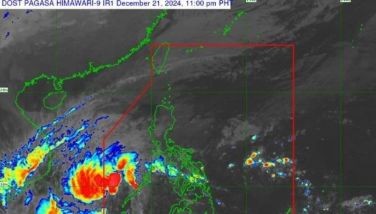Brgys challenged: Turn spaces into landscape art
CEBU, Philippines – Barangays in Cebu City are challenged to allocate and transform a dead space into green pocket art parks for children and the community.
This is the highlight of “The Great Urban Challenge” spearheaded by the Cebu City Agriculture Department and the Youth for Livable Cebu, a youth arm of the Movement for Livable Cebu.
The program was launched yesterday in Barangay San Roque.
According to the program’s prime movers, TGUC as inspired by urban gardening is a multi-stakeholder approach to urban revitalization through promoting creative greening developments.
It aims at breathing in life to urban spaces by partnering and collaborating with the public sector, institutions, and children and youth groups. Also, it aims to create pocket parks in the city’s 80 barangays.
Francis Sollano, YLC co-founder, said creating the pocket parks is a competition.
“The formation of pocket parks is in line with the spirit of harnessing livability, volunteerism and creative upcycling via gardening and farming,” he said.
City agriculturist Joey Baclayon said the competition is open to all 40 urban barangays of this city. They will compete for the Urban Art Garden Category.
The city’s agriculture department will provide plants, trees or ornamentals and garden soil to the barangays.
The barangays need to designate an area less than 25 square meters, either public or private space for their pocket parks.
Public lots have to be legally available for pocket park transformation while the barangay would need to enter into a memorandum of agreement with the owner of a private lot it wants to utilize.
Abandoned spaces would need to include walls for vertical gardens and the like.
Furthermore, the space should not hamper mobility and reduce safety.
The winners of the program would get P30,500 (first), P20,000 (second), P10,000 (third), and P5,000 as consolation prizes.
The awarding would be on February next year.
Mechanics
The barangays are judged in four phases – once in November and December this year and in January and February next year. Judging will be done at random dates without informing the participating barangays.
The criteria include resource mobilization (20 percent), creativity and innovation (30 percent), maintenance and sustainability (30 percent), community-friendly public space, (10 percent) and volunteerism of youth and children (10 percent).
Barangays are encouraged to select plants appropriately that should be a mix of edible and aesthetic, while the landscape is permeable, attractive, and environmentally sensitive.
The design should be an energy efficient use of tree canopy situated in shady and sunny areas and must incorporate natural landscape contours.
For maintenance, the area must have on-site composting with weeds kept to a minimum and plants are neat and tidy.
According to Baclayon, each landscape must utilize creativity and innovation in landscaping and maximize the use of recycled materials like old tires, plastic bottles and crates, among others.
Expenses should not exceed P3,000.
Model
Once the program is successful, the British Council, United Kingdom’s international organization for cultural relations and educational opportunities, will promote Cebu as green city to other cities and organizations in the globe.
Sollano said this is apart from recognizing the city as one of the models of urban greening.
He said the council, through its creative and arts committee, will adopt Cebu City’s framework and introduce it to other developing cities, particularly in ASEAN region.
“We are encouraged to create different art installation for people to gather. Cities should grow the art scene through parks,” he said. —/JMO (FREEMAN)
- Latest






















